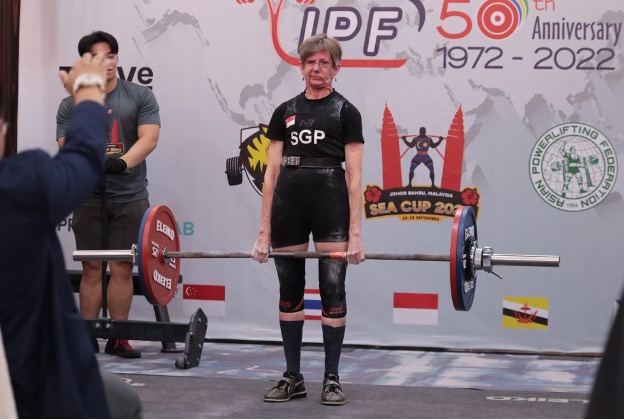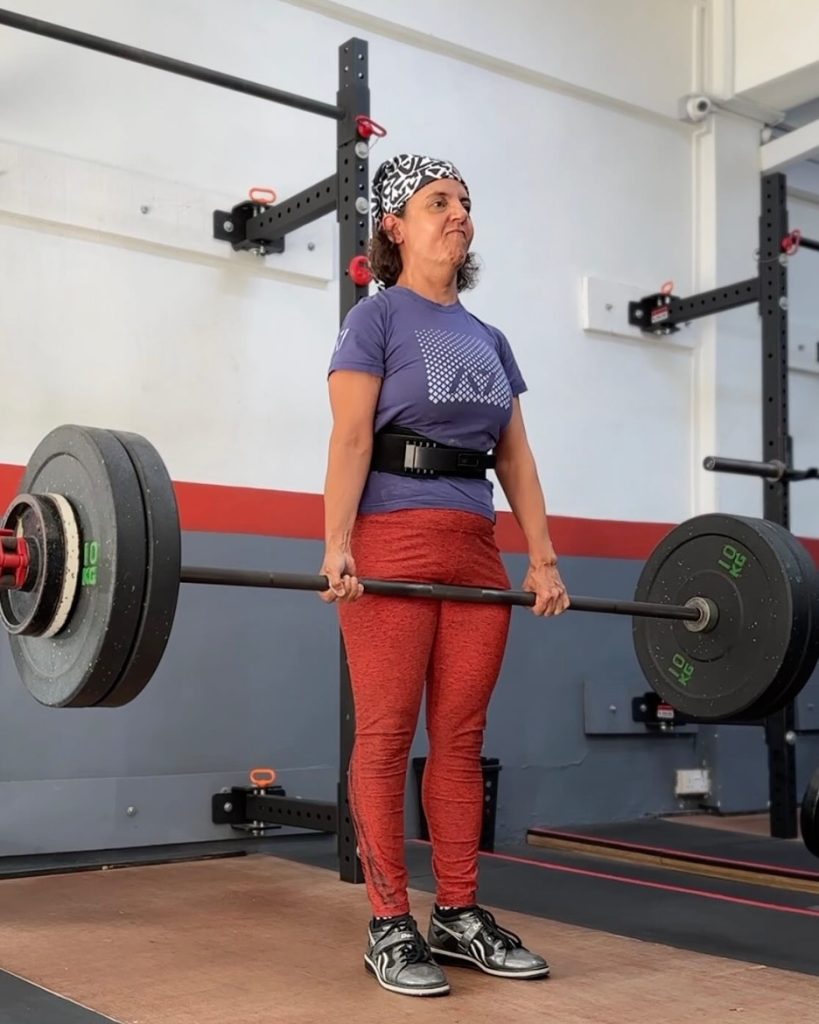
Robin, one of my clients at Hygieia, introduced me to a program called LIFTMOR—short for Lifting Intervention for Training Muscle and Osteoporosis Rehabilitation. As the name suggests, the goal is clear: help people with osteoporosis regain strength through lifting. As I kept reading about the program, it felt like I’d discovered Starting Strength’s long-lost Australian cousin—custom-built for aunties with osteoporosis.
In this article, I’d like to introduce you to this fascinating trial and share some thoughts on how it compares to the Starting Strength method.
LIFTMOR
Background
The LIFTMOR trial was developed to address a pressing issue: millions of postmenopausal women suffer from low bone density, increasing their risk of fractures, reduced mobility, and diminished quality of life. For decades, exercise guidelines for osteoporosis emphasized low-impact activities like walking or resistance bands, assuming osteoporotic bones were too fragile for heavy or high-impact training.
However, advances in our knowledge of bone physiology—particularly the concept of mechanotransduction, the process by which bones adapt to mechanical loading—suggest that bones need high-strain stimuli to grow stronger. Led by researchers in Australia, the LIFTMOR team designed a study to test whether high-intensity resistance and impact training could safely and effectively improve bone density and “functional” strength in women with osteopenia or osteoporosis.
Program Structure
The trial enrolled postmenopausal women over 60 with low bone mineral density and randomly assigned them to either a high-intensity training group or a low-intensity control group. The intervention group followed a supervised program called HiRIT (High-Intensity Resistance and Impact Training) twice per week for eight months. Each 30-minute session included four carefully selected exercises: deadlifts, back squats, overhead presses, and jumping chin-ups with drop landings.
These movements were chosen for their ability to load the spine and hips—the most common fracture sites in osteoporosis. After an initial ramp-up period to learn technique, participants trained with loads around 80–85% of their one-rep max, performing 5 sets of 5 repetitions. Sessions were closely supervised to ensure safety and proper form. The control group performed a home-based, low-load program using bodyweight and light dumbbell exercises.
You can also watch a video explanation of it here.
Results
Out of 500 interested applicants, the study ultimately enrolled 101 women (49 in the high-intensity group and 52 in the control group). Participants were screened out for reasons such as recent fractures, severe kyphosis, neurological disorders like Parkinson’s or stroke, or an inability to learn to squat, press, and deadlift safely.
The results were impressive. After eight months, the high-intensity group saw significant increases in bone mineral density—an average 3% gain at the lumbar spine and 2% at the femoral neck. Meanwhile, the control group lost bone density over the same period. The training group also experienced a 40% improvement in back and leg strength, better posture, and enhanced balance and mobility—all of which contribute to reduced fall and fracture risk. Another important sidenote is that no fractures or serious injuries occurred in the high-intensity group, proving that heavy lifting can be safe and effective even for women with low bone mass.
At our gym, approximately 47% of our members are women—and about half of them are in the postmenopausal age group. Many of these women come to us with concerns about osteoporosis or are looking for ways to reverse osteopenia and strengthen their bones.
Using the Starting Strength Method, our coaches have helped these clients increase their overall strength—and with it, their bone density. While improving bone density isn’t the primary goal of the program, it often becomes a powerful secondary benefit. Unlike medication, which may slow bone loss or increase density to some degree, strength training brings additional advantages, such as increased muscle mass that makes activities of daily living easier.
We’ve seen this firsthand. Here are a few examples from women at our gym who have trained consistently. Please click on the link to see their results.


Sumi:

Since LIFTMOR and Starting Strength share many similarities, I’d like to highlight a few key comparisons between the two.
Exercise Selection
LIFTMOR and Starting Strength share similar foundational exercises: squats, presses, and deadlifts. These compound barbell lifts recruit large amounts of muscle mass over long ranges of motion and load the spine and hips, making them ideal for stimulating bone growth under Wolff’s Law.
LIFTMOR replaced the power clean with jumping chin-ups and drop landings to deliver high-impact loading. While the bench press is omitted in LIFTMOR due to time constraints and focus on axial loading, this simplification is reasonable for a 30-minute protocol.
Some may argue that power cleans aren’t suitable for older populations due to the risk of injury. At Starting Strength, the power clean is valued more for developing power (force production) than for raw strength, and is often excluded for older or less athletic trainees. In its place, a useful takeaway from Dr. Vonda Wright’s viral talk on aging is the simple habit of doing 20 small jumps daily—which she demonstrates can be as easy as 20 light hops. If power cleans aren’t feasible, this can be a low-barrier substitute for impact loading.
Programming and Load Intensity
Both LIFTMOR and Starting Strength rely on progressive overload using relatively heavy weights. LIFTMOR’s prescribed intensity of ~80–85% of 1RM is comparable to Starting Strength’s heavy sets of five. However, I wonder how LIFTMOR determined these percentages without true 1RM testing. If bar speed or subjective difficulty was used to estimate load, this mirrors Starting Strength’s practical approach.
That said, I suspect the 80–85% estimate may be optimistic. Performing 5 sets of 5 reps on multiple lifts with just 1-minute rest is extremely challenging at that intensity. In contrast, Starting Strength typically uses 3 sets of 5 with 3–5 minute rests, which enables higher training loads —important factors for bone adaptation according to Wolff’s Law, despite sacrificing the compact 30-minute training duration.
Technique and Coaching
LIFTMOR includes a one-month ramp-up period to teach technique while gradually increasing load. This is similar to Starting Strength’s linear progression, though the timeline is more flexible in SSNLP, depending on the trainee’s ability to continue progressing.
However, LIFTMOR does not publicly detail the movement standards or coaching methodology used. Starting Strength, by contrast, employs a formalized teaching progression and a well-documented model detailed over 60 pages in the 3rd edition of Starting Strength: Basic Barbell Training.
LIFTMOR ensured safe training with a maximum coach-to-lifter ratio of 1-to-8. At Hygieia Strength and Conditioning, we go further, maintaining a 1-to-5 ratio to ensure quality coaching and safety for all clients.
Final Thoughts
If you’re concerned about bone density and inspired by the LIFTMOR results, finding a Starting Strength or affiliated gym is a great next step. Both programs are grounded in the same principles: high-intensity, barbell-based resistance training that safely and effectively strengthens muscle and bone.
We believe in health through strength for everyone, and it’s never too late to start.
Give it a try!

